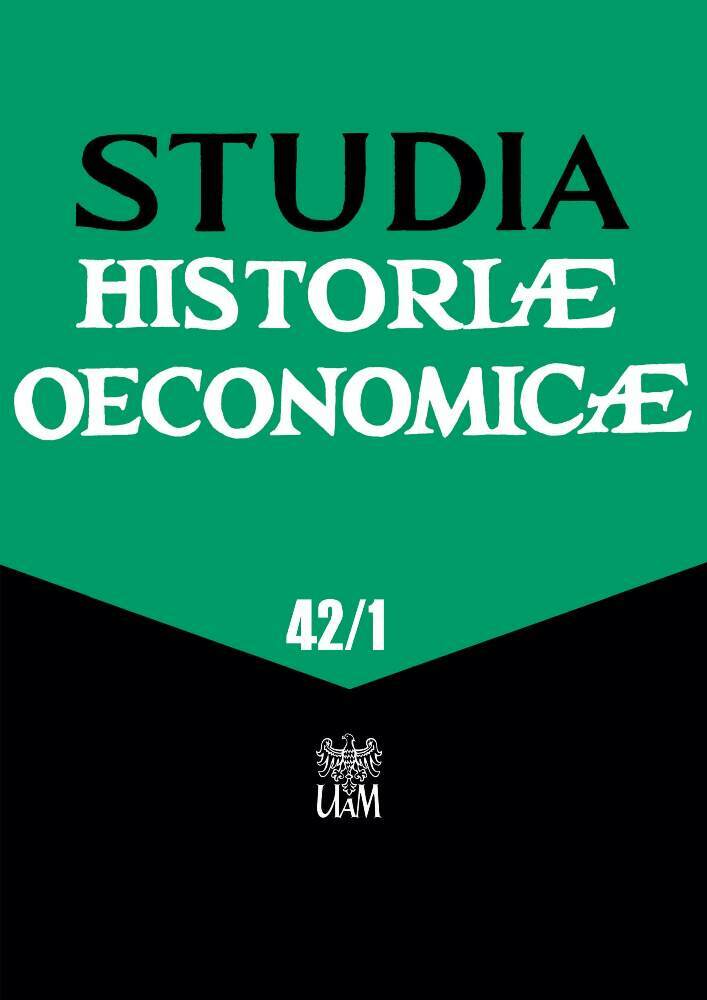Abstract
The aim of this article is to present the hypothesis that a powerful earthquake, which resulted in, among others, the destruction and engulfment by water of the bay of two cities, Helike and Bura (373/72 BC) may have been one of two significant causes for which Plato drew attention to soil degradation and erosion processes in Attica and their potentially devastating effects. The second reason was the personally experienced anthropogenic transformation of the natural environment. The philological and historical commentary on the dialogue Critias also showed that Plato, in his analysis, used contemporary terminology in the field of natural sciences.
References
Aeschylus, Ptometheus vinctus
Aristotle, Athenaion Politeia
Aristotle, De generatione animalium
Aristotle, Historia animalium
Aristotle, Pseudo-, De mundo
Diodorus, Bibliotheca Historica
Herodotus, Historiae
Pausanias, Graeciae descriptio
Plato, Critias
Plato, Leges
Plato, Phaedo
Plato, Theaetetus
Plato, Timaeus
Plato, Pseudo-, Halcyon
Polybius, Historiae
Seneca, Quaestiones Naturales
Strabo, Geographica
Theocritus, Idyllia
Theophrastus, Historia plantarum
Xenophon, Oeconomicus
Bell, R.E., McNeill, L.C., Bull, J.M., Henstock, T.J., Collier, R. and Leeder, M.R. (2009) ‘Fault architecture, basin structure and evolution of the Gulf of Corinth Rift, central Greece’, Basin Research, 21, pp. 824–855. DOI: https://doi.org/10.1111/j.1365-2117.2009.00401.x
Broneer, O. (1939) ‘A Mycenaean Fountain on the Athenian Acropolis’, Hesperia, 8, pp. 317–433. DOI: https://doi.org/10.2307/146495
Console, R., Falcone, G., Karakostas, V. and Murru, M. (2013) ‘Renewal models and coseismic stress transfer in the Corinth Gulf, Greece, fault system’, Journal of Geophysical Research: Solid Earth, 118, pp. 3655–3673. DOI: https://doi.org/10.1002/jgrb.50277
Di Nicuolo, C. (2022) ‘Peiraieus: la prima isola di Atene’, Pelargos, 3, pp. 165–190.
Eberz, J. (1910) ‘Die Bestimmung der von Platon entworfenen Trilogie Timaios, Kritias, Hermokrates’, Philologus, 69, pp. 40–50. DOI: https://doi.org/10.1515/phil-1910-0107
Feng, L., Newman, A.V., Farmer, G.T., Psimoulis, P. and Stiros, S.C. (2010) ‘Energetic rupture, coseismic and post-seismic response of the 2008 MW6.4 Achaia-Elia Earthquake in northwestern Peloponnese, Greece: an indicator of an immature transform fault zone’, Geophysical Journal International, 183, pp. 103–110. DOI: https://doi.org/10.1111/j.1365-246X.2010.04747.x
Ganas, A., Serpelloni, E., Drakatos, G., Kolligri, M., Adamis, I., Tsimi, C. and Batsi, E. (2009) ‘The Mw 6.4 SW-Achaia (western Greece) earthquake of 8 June 2008: seismological, field, GPS observations, and stress modeling’, Journal of Earthquake Engineering, 13, pp. 1101–1124. DOI: https://doi.org/10.1080/13632460902933899
Gawthorpe, R.L. (2022) ‘Late Quaternary mud-dominated, basin-floor sedimentation of the Gulf of Corinth, Greece: Implications for deep-water depositional processes and controls on syn-rift sedimentation’, Basin Research, 34, pp. 1567–1600. DOI: https://doi.org/10.1111/bre.12671
Gill, Ch. (2017) Plato’s Atlantic Story. Text, Translation and Commentary. Liverpool: Liverpool UP. DOI: https://doi.org/10.5949/liverpool/9781786940162.001.0001
Giovannini, A. (1985) ‘Peut-on démythifier l’Atlantide?’, Museum Helveticum, 42, pp. 151–156.
Goiran, J.-F., Pavlopoulos, K., Fouache, E., Triantaphyllou, M. and Etienne, R. (2011) ‘Piraeus, the Ancient Island of Athens: Evidence from Holocene Sediments and Historical Archives’, Geology, 39(6), pp. 531–534. DOI: https://doi.org/10.1130/G31818.1
Karakostas, V. (2017) ‘The Aftershock Sequence of the 2008 Achaia, Greece, Earthquake: Joint Analysis of Seismicity Relocation and Persistent Scatterers Interferometry’, Pure and Applied Geophysics, 174, pp. 151–176. DOI: https://doi.org/10.1007/s00024-016-1368-y
Klingenberg, E. (1976) Platons NOMOI ΓΕΩΡΙΚΟΙ [Nomoi Georgikoi] und das positive griechische Recht. Berlin: J. Schweitzer. DOI: https://doi.org/10.1515/9783112322222
Martin, Th.-H. (1841; 1981) Etudes sur le Timée de Platon. Paris: Ladrange Libraire.
Mattéi, J.-F. (1996) Platon et le miroir du mythe. De l’âge d’or à l’Atlantide. Paris: PUF.
Mesimeri, M., Karakostas, V., Papadimitriou, E., Tsaklidis, G. and Jacobs, K. (2018) ‘Relocation of recent seismicity and seismotectonic properties in the Gulf of Corinth (Greece)’, Geophysical Journal International, 212, pp. 1123–1142. DOI: https://doi.org/10.1093/gji/ggx450
Mocek, A. (ed.) (2015) Gleboznawstwo. Warszawa: Wydawnictwo Naukowe PWN.
Mouyaris, N., Papastamatiou, D. and Vita-Finzi, C. (1992) ‘The Helice Fault?’, Terra Nova, 4, pp. 124–129. DOI: https://doi.org/10.1111/j.1365-3121.1992.tb00457.x
Pavlopoulos, K., Vandarakis, D., Fachard, S. Knodell, A. and Kapsimalis, V. (2020) ‘Long-Term Sea Level Changes in the Saronic and Southern Euboean Gulf’, in Papadimitriou, N., Wright, J.C., Fachard, S., Polychronakou-Sgouritsa, N. and Andrikou, E. (eds) Athens and Attica in Prehistory. Proceedings of the International Conference Athens, 27–31 May 2015. Athens: Archaeopress, pp. 39–48. DOI: https://doi.org/10.2307/j.ctv15vwjjg.11
Rosenmeyer, Th.G. (1956) ‘Plato’s Atlantis Myth: Timaeus or Critias?’, Phoenix, 10, pp. 163–172. DOI: https://doi.org/10.2307/1086018
Schimpf, F. (2018) ‚Raumschemata griechischer ‘Naturheiligtümer’ Separierte Naturmale und die additive Sakralisierung natürlicher Elemente‘, in Schimpf, F., Berrens, D., Hillenbrand, K., Brandes, T. and Schidlo, C. (eds) Naturvorstellungen im Altertum. Schilderungen und Darstellungen von Natur im Alten Orient und in der griechischen Antike. Oxford: Archaeopress, pp. 209–229. DOI: https://doi.org/10.2307/j.ctv1pdrqb9.11
Stiros, S. (2022) ‘The 373 B.C. Helike (Gulf of Corinth, Greece) Earthquake and Tsunami Revisited’, Seismological Research Letters, 93, pp. 444–457. DOI: https://doi.org/10.1785/0220210092
Trampedach, K. (1994) Platon, die Akademie und die zeitgenössische Politik. Stuttgart: F. Steiner.
Van Damme, T. (2023) ‘The Mycenaean Fountain and the Transformation of Space on the Athenian Acropolis: 1200 to 675 B.C.’, Hesperia, 92, pp. 111–190. DOI: https://doi.org/10.2972/hes.2023.a884939
Vandarakis, D., Pavlopoulos, K., Vouvalidis, K., Fouache, E. and Kapsimalis, V. (2020) ‘The Contribution of Simulated Litography in the Geoarchaeological Research of the Athenian Basin during the Holocene’, in Papadimitriou, N., Wright, J.C., Fachard, S., Polychronakou-Sgouritsa, N. and Andrikou, E. (eds) Athens and Attica in Prehistory. Proceedings of the International Conference Athens, 27–31 May 2015. Athens: Archaeopress, pp. 31–38. DOI: https://doi.org/10.2307/j.ctv15vwjjg.10
Wilamowitz-Moellendorff, U. von (1919) Platon, 2. Berlin: Weidmann.
License
Copyright (c) 2024 Kazimierz Ilski, Anna Kotłowska

This work is licensed under a Creative Commons Attribution-ShareAlike 4.0 International License.





